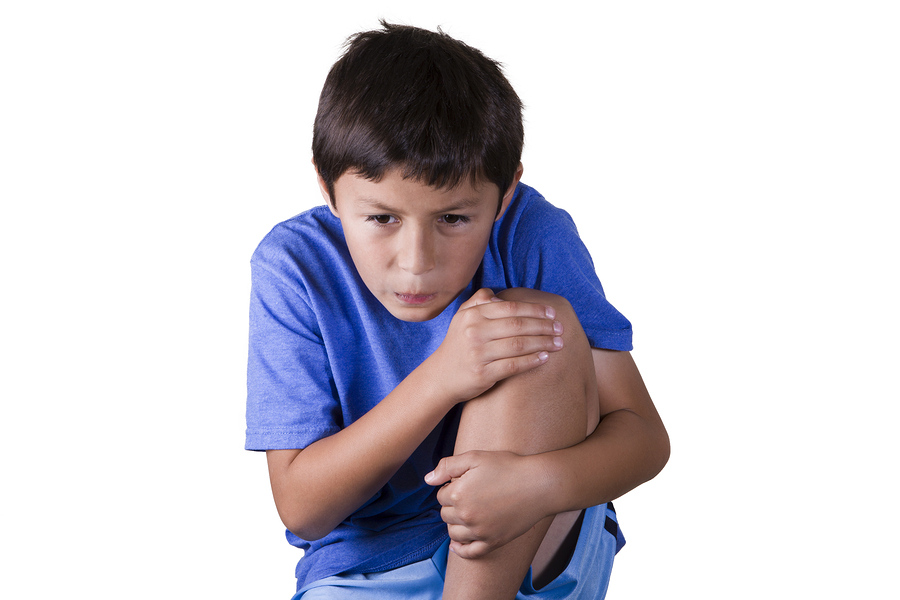As a kid, you may remember what your parents called “growing pains.” These usually occurred during the late afternoon hours or at night, but were generally gone by morning. They tended to affect your shins, calves or the back of your knees, and most of the time, both legs ached or throbbed at the same time rather than just one.
About growing pains
While it seems like a reasonable explanation, there’s no scientific evidence that these pains are actually caused by growing. This type of pain occurs most often in kids between the ages of 2 and 12, and as many as a third of all children will experience them. However, research has shown that they don’t usually coincide with growth spurts.
They occur in both boys and girls—but slightly more often in girls. Sometimes these muscle aches are accompanied by a stomachache or a headache.
The current thinking is that the condition is probably caused by overdoing physical activity, something kids tend to do—running, jumping, climbing. Growing pains seem to affect certain kids more than others. One theory is that children who are extremely flexible but who have flat feet seem to be more susceptible. Kids with less bone strength also seem more likely to get them.
Although the cause has not been absolutely identified, growing pains are invariably gone by morning with no lasting effects and kids eventually grow out of them.
But is it something more?
In rare cases, what may seem like a bad episode of growing pains is actually something else.
If the pain is severe and there’s swelling, that’s a warning sign. Typically, growing pains don’t cause the affected areas in the legs to look abnormal. A lump in a muscle, fever, hot skin or swelling should put parents on alert. Because growing pains don’t typically occur in the joints themselves, a persistently sore joint is indicative of another problem.
Some of these symptoms can point to juvenile idiopathic arthritis (JIA), a chronic disease in which the body itself attacks the lining of the joints. There are several types of JIA, some of which affect the entire body, also causing a rash or inflammation of the eyes.
Juvenile idiopathic arthritis is fairly rare—it affects only 1 in 1,000 kids, but it can be serious and significantly affect the child’s quality of life.
Sometimes, bone tumors can also be diagnosed as growing pains. While these can be very dangerous, most are benign, don’t spread and can be surgically removed.
And of course, kids tend to enthusiastically surpass their limitations, and may experience a fall, a strain or sprain that causes injury to a joint or overstresses a muscle.
If your child’s or grandchild’s pain is extreme or doesn’t fit the profile of normal growing pains, it’s time to seek medical help. Kids who are tired and experience joint pain throughout the day need to be checked out right away.
Can adults get growing pains?
Growing pains generally stop when a child reaches puberty. However, some adults report feeling similar sensations even after that.
One cause is called “delayed onset muscle soreness,” which is muscular pain that occurs hours—even days—after exercise. This isn’t usually serious and can be relieved by over-the-counter pain medication and massage.
Leg cramping can also mimic growing pains. Even if muscles aren’t overstressed, cramps can occur from dehydration, so it’s important to maintain good fluid intake, especially when exercising or in hot weather.
Many adults associate the pain they may feel in their joints with that old sensation they experienced as children. However, it’s not growing pains—they don’t affect adults and don’t occur in joints. There can be many other causes for this pain: an injury, osteoarthritis or rheumatoid arthritis are possibilities. One study showed that there may also be a relationship between knee pain in childhood and a joint problem later on.
What to do
Joint pain can be serious business, for kids and grownups alike. If you experience something that feels like growing pains as an adult, consult the specialists at Flexogenix™. While most kids with growing pains mature out of them, joint pain in adults probably won’t go away by itself without treatment. Flexogenix™ can help get to the root cause of your pain and direct you to a course of therapy.
Reference links:
https://www.mayoclinic.org/diseases-conditions/growing-pains/symptoms-causes/syc-20354349
https://my.clevelandclinic.org/health/diseases/13019-growing-pains
https://www.ncbi.nlm.nih.gov/pmc/articles/PMC1869025/
https://posna.org/Physician-Education/Study-Guide/Growing-Pains
https://my.clevelandclinic.org/health/articles/juvenile-idiopathic-arthritis
http://health.au.dk/en/about-health/currently/news/news/artikel/many-people-never-grow-out-of-their-growing-pains/






